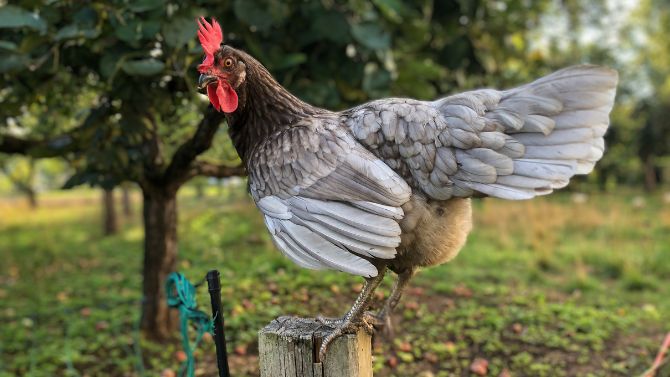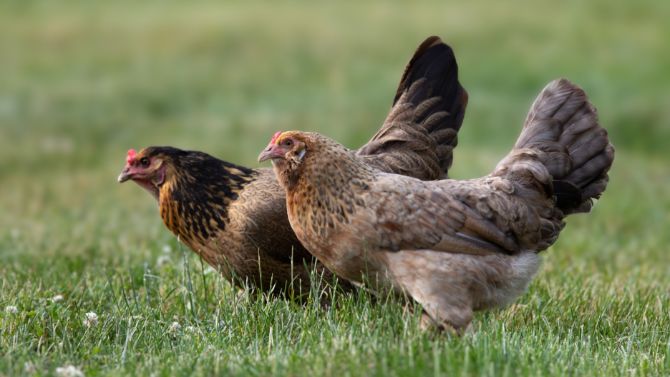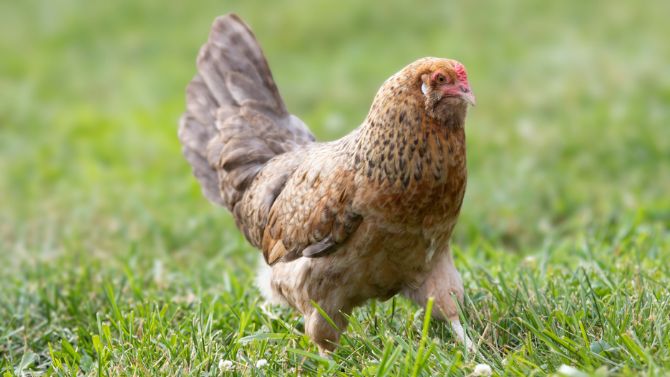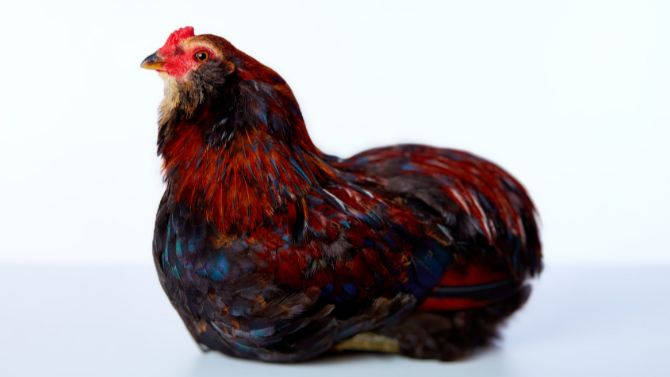Have you ever gazed upon a chicken shimmering in an array of multi-colored feathers with an equally impressive array of egg colors to match? You’ve likely encountered the delightful Easter Egger. From the jewel-toned eggs they lay to their endearing personalities, they are an enchantment in the poultry world. Today, we are discussing these whimsical birds.
The Basics
Before we dive in, let’s clarify something: the term “Easter Egger” doesn’t refer to a recognized breed per se, but rather a type of chicken known for its ability to lay colored eggs – typically blue, green, pink, or even lavender! Derived from the Araucana and Ameraucana breeds, these hens often surprise their owners with the shades of eggs they produce.
The Origin: A Tale of Two Ancestors
Araucanas and Ameraucanas are both recognized breeds and the proud parents of the Easter Egger lineage. Araucanas hail from Chile and are rumpless birds known for their blue eggs and tufted ears.
Ameraucanas, developed in the US, have a muffed and bearded face with slate blue legs, laying eggs of a blue tint. Easter Eggers, however, are a mix of these breeds with other chickens. This genetic potluck results in a vast diversity of appearances and egg colors.
A Spectrum of Colors: Not Just in Eggs
The Easter Egger is the chameleon of the chicken world. Here are some traits they might sport:
- Feathers: From black, white, and brown to everything in between, their feathers can be solid, speckled, or mottled.
- Combs: Their combs can vary, but many have a ‘pea’ comb – a small, close-fitting comb with three ridges.
- Eyes: Often displaying an alert and inquisitive gaze, their eyes can be black, brown, or even reddish.
- Legs: Leg color isn’t consistent, ranging from green, and gray to yellow. Some even have feathered legs!
Eggstraordinary Eggs!

What really sets Easter Eggers apart is their eggs. Here’s a fun fact: you can often guess the egg color by the color of the hen’s earlobes!
Though not foolproof, hens with red earlobes usually lay brown eggs, while those with white or blue earlobes lay blue or green eggs. However, with Easter Eggers, you might get:
- Blue Eggs: A pure, sky-blue reminiscent of robin’s eggs.
- Green Eggs: Ranging from minty pastels to deep olive.
- Pink Eggs: A gentle, blush pink that looks too pretty to eat!
- Lavender and Other Shades: Occasionally, you’ll find a hen laying a unique shade, adding to the magic of this chicken.
Personality
Beyond their beautiful exterior, Easter Eggers are known for their delightful personalities. They are:
- Friendly: Often amiable, these birds are great for families and can even be affectionate.
- Hardy: Adapt well to different climates, making them versatile for various locations.
- Alert: With their keen eyes, they’re good at avoiding predators.
- Productive: Expect around 200-280 eggs per year from a happy Easter Egger!
Fun Facts
Now that we’ve covered the basics let’s indulge in some Easter Egger trivia that might just make you the star at your next backyard chicken enthusiast meetup!
Egg Color Science
The blue egg gene is dominant. So, if an Easter Egger hen is mated with a rooster from any other breed, there’s a chance the offspring will lay blue or green eggs!
Lifespan
With proper care, Easter Eggers can live up to 8-10 years, making them long-term companions for those who keep them.
Roosters
Easter Egger roosters are equally diverse in coloration and often possess a regal bearing. They’re generally known to be calm and less aggressive compared to roosters of other breeds.
Molt Marvel
Like all chickens, Easter Eggers molt, but due to their diverse feathering, each molt can reveal a slightly different pattern or coloration. It’s like getting a new chicken every year!
Name Origins
The name “Easter Egger” aptly describes the colorful array of eggs reminiscent of Easter festivities and the tradition of dyeing eggs in vibrant hues.
Easter Eggers in Pop Culture

Given their intriguing blend of traits, it’s no surprise that Easter Eggers have also made a splash in popular culture. From featuring in viral internet videos, to being the preferred backyard breed of some celebrities, these chickens are not just for the coop anymore!
- Children’s Books: Several children’s tales have been written with Easter Egger protagonists, teaching kids about diversity and uniqueness.
- Art & Craft: The picturesque eggs laid by the Easter Egger have inspired many artists. From watercolor depictions to actual eggshell crafts, the vibrant hues are a favorite.
- TV Appearances: A few Easter Eggers have even strutted their stuff on television, often on lifestyle or farming segments, captivating audiences with their egg-laying prowess.
To Adopt or Not?
If you’re considering adding an Easter Egger to your flock or starting your poultry journey with one, here are a few things to keep in mind:
Space
Ensure you have enough space. A minimum of 10 square feet per chicken in the run is recommended.
Social Dynamics
If introducing an Easter Egger to an existing flock, monitor the social dynamics closely at first. Every flock has its pecking order.
Egg Expectations
Remember, while they’re famed for their colorful eggs, there’s no guarantee of the exact shade you’ll get. Embrace the surprise!
Love & Care
Like all pets, Easter Eggers thrive on attention and care. Regular health check-ups, clean housing, and occasional treats will keep them happy and healthy.
The Easter Egger in the Community

Given their popularity, many poultry enthusiasts and backyard chicken keepers have formed communities centered around the Easter Egger. These groups share tips, experiences, and, of course, plenty of pictures!
- Social Media: Sites like Instagram are abuzz with hashtags such as #EasterEggerLove and #ColorfulCluckers, showcasing the best of these chickens.
- Forums & Clubs: Poultry forums often have dedicated threads or sections for Easter Egger enthusiasts. These are great places for advice, resources, and hatching egg swaps.
- Local Events: Some communities even host “Easter Egger Days” – events celebrating the breed with fun activities, educational sessions, and community building.
Sustainability
In the broader context of sustainability, the Easter Egger plays a role, too. Their hardiness, adaptability, and decent laying rate make them excellent candidates for small-scale, sustainable poultry farming.
Moreover, their diverse genetics might prove beneficial for broader poultry genetics conservation in the future.
FAQs
Do Easter Egger roosters also have colorful feathers like the hens?
Yes, they often exhibit colorful and varied feathering patterns, much like the hens. Their appearance can be quite striking, with some showcasing iridescent tail feathers and vibrant hackles.
How early can you determine the egg color an Easter Egger will lay?
While the earlobe color can sometimes give a hint, the true test is waiting until the hen lays her first egg, typically around 5-7 months of age. Until then, it remains a delightful mystery.
Is the taste or nutritional content of Easter Egger eggs different from regular white or brown eggs?
No, the taste and nutritional content of eggs primarily depends on the diet and overall health of the hen, not the eggshell color.
Easter Egger eggs, when compared to white or brown eggs from hens with similar diets, will taste and nourish similarly.
Can Easter Eggers be kept with other chicken breeds?
Absolutely! They generally have amiable temperaments and can coexist peacefully with a variety of other chicken breeds.
However, as with introducing any new chickens to a flock, it’s important to monitor interactions initially to ensure a smooth integration.
How many times a week do Easter Eggers typically lay eggs?
On average, a healthy and well-fed one will lay 4 to 5 eggs a week. However, factors like age, diet, climate, and daylight can influence their laying patterns.
Are Easter Egger chickens good flyers?
They have a moderate ability to fly short distances, especially when they need to escape predators or roost in higher places.
While they’re not the most agile flyers in the poultry world, it’s a good idea to have a secure fence or chicken run to ensure they stay within their designated area.
Final Words

There’s no doubt that the Easter Egger Chicken has carved a special place in the hearts of many. Their unpredictability in appearance and egg color encapsulates the magic and wonder of nature.
Whether you’re a seasoned poultry pro or a newcomer to the chicken-keeping world, the Easter Egger promises a journey filled with color, surprises, and joy.
